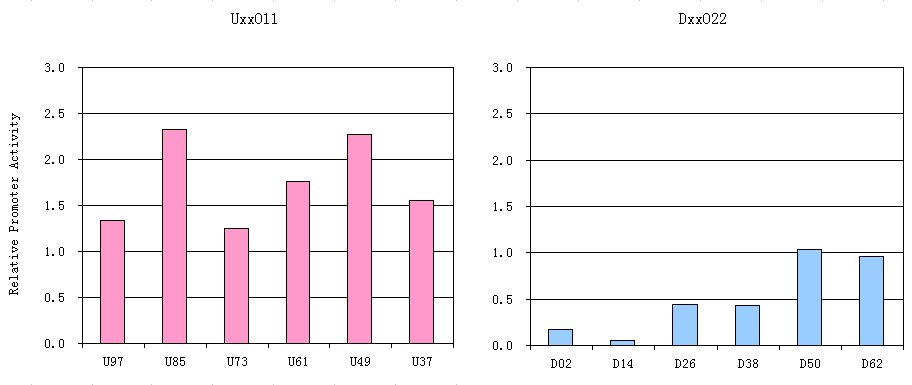USTC/OperatorPosition
From 2007.igem.org
Different locations of an operator play a role in determining the intensity of repression in vivo [1]. Both operators with strong and weak repression are required to the gates. Therefore, we systematically tested the influence of an operator at different locations on the promoter activity.
Downstream Operators exhibit intense repression effect when bound by their according repressors. The closer they are fixed to the consensus sequence, the intenser the repression will be. Repression resulted from faraway repressor-operator pairs are so weak that it could be ignored in some situation. In contrast, repressor-operator pairs upstream of the consensus sequence have more or less shown the activation effect rather than repressed the activity of promoters, which made us much astonished. (Please refer to Figure 1 and 2.)
References
1. Elledge, S. J. & Davis, R. W. (1989), 'Position and density effects on repression by stationary and mobile DNA-binding proteins.', Genes Dev 3(2), 185--197.

